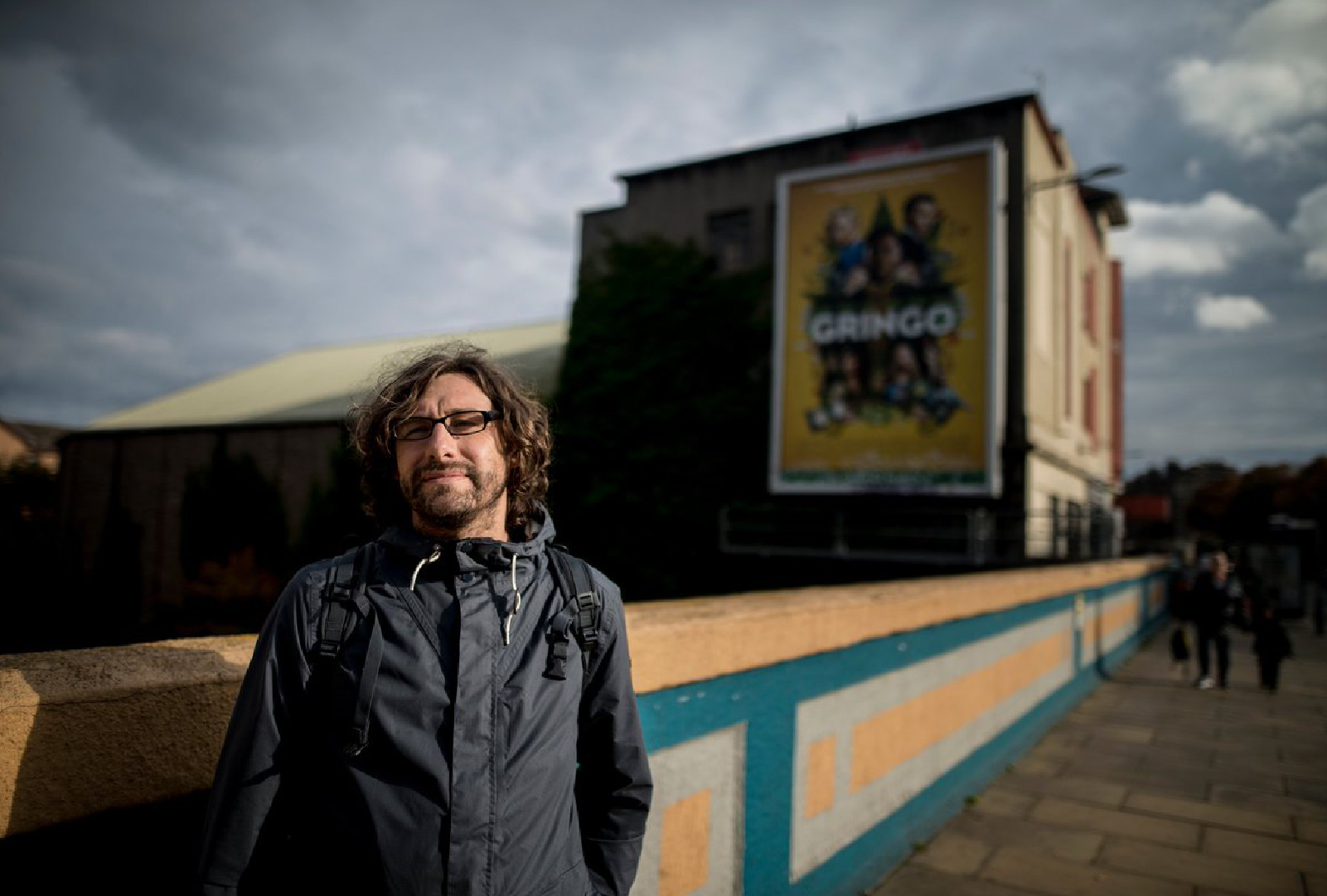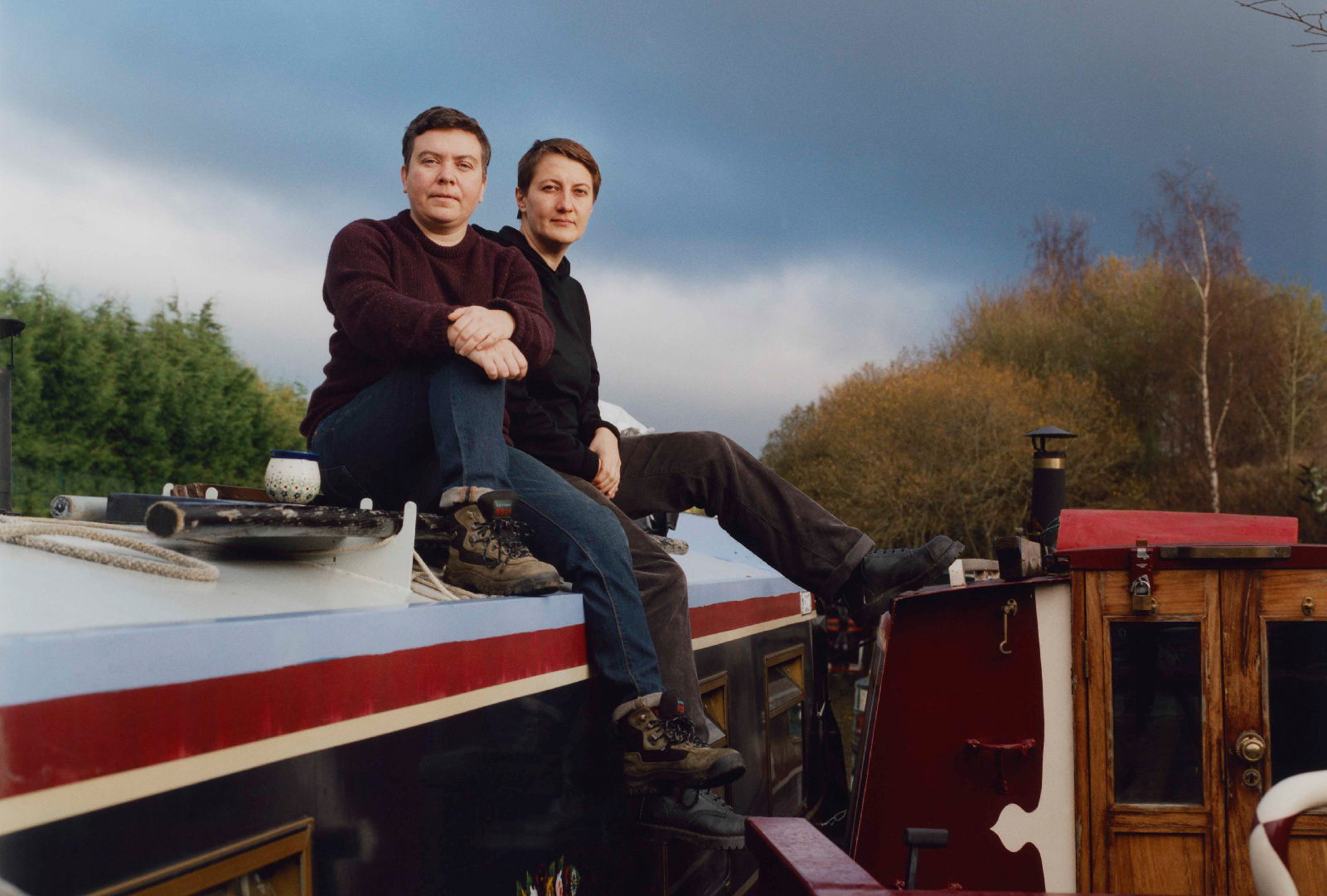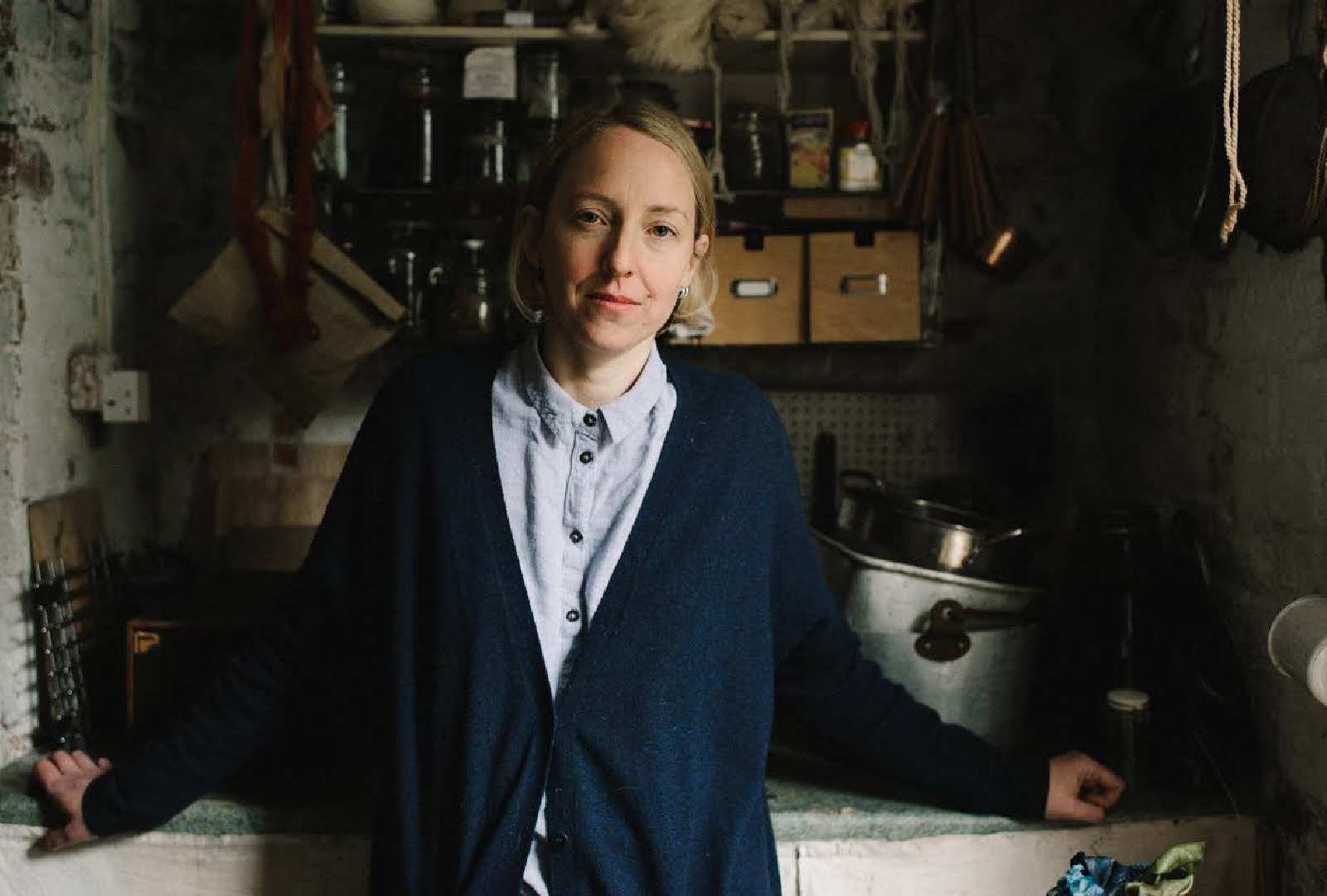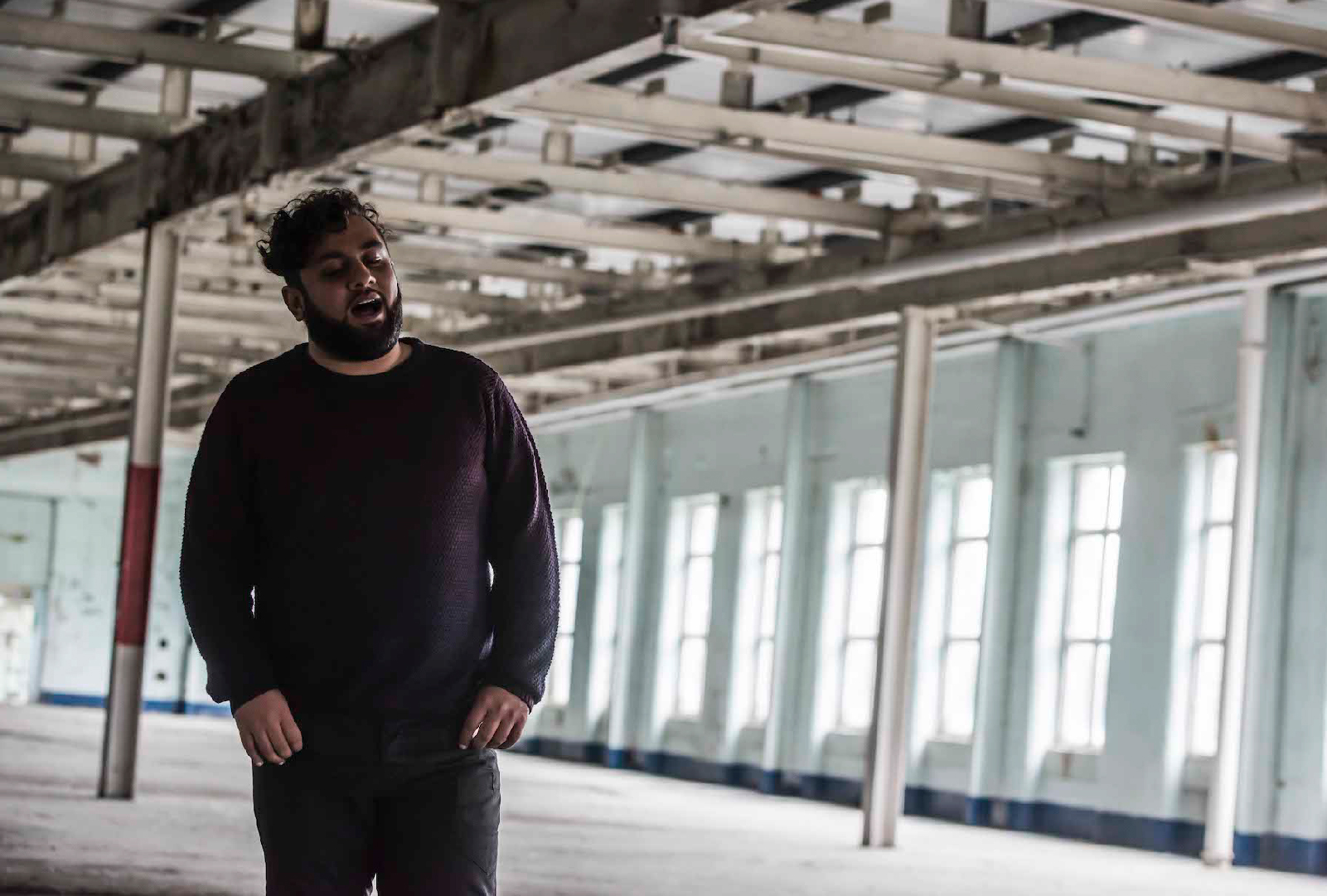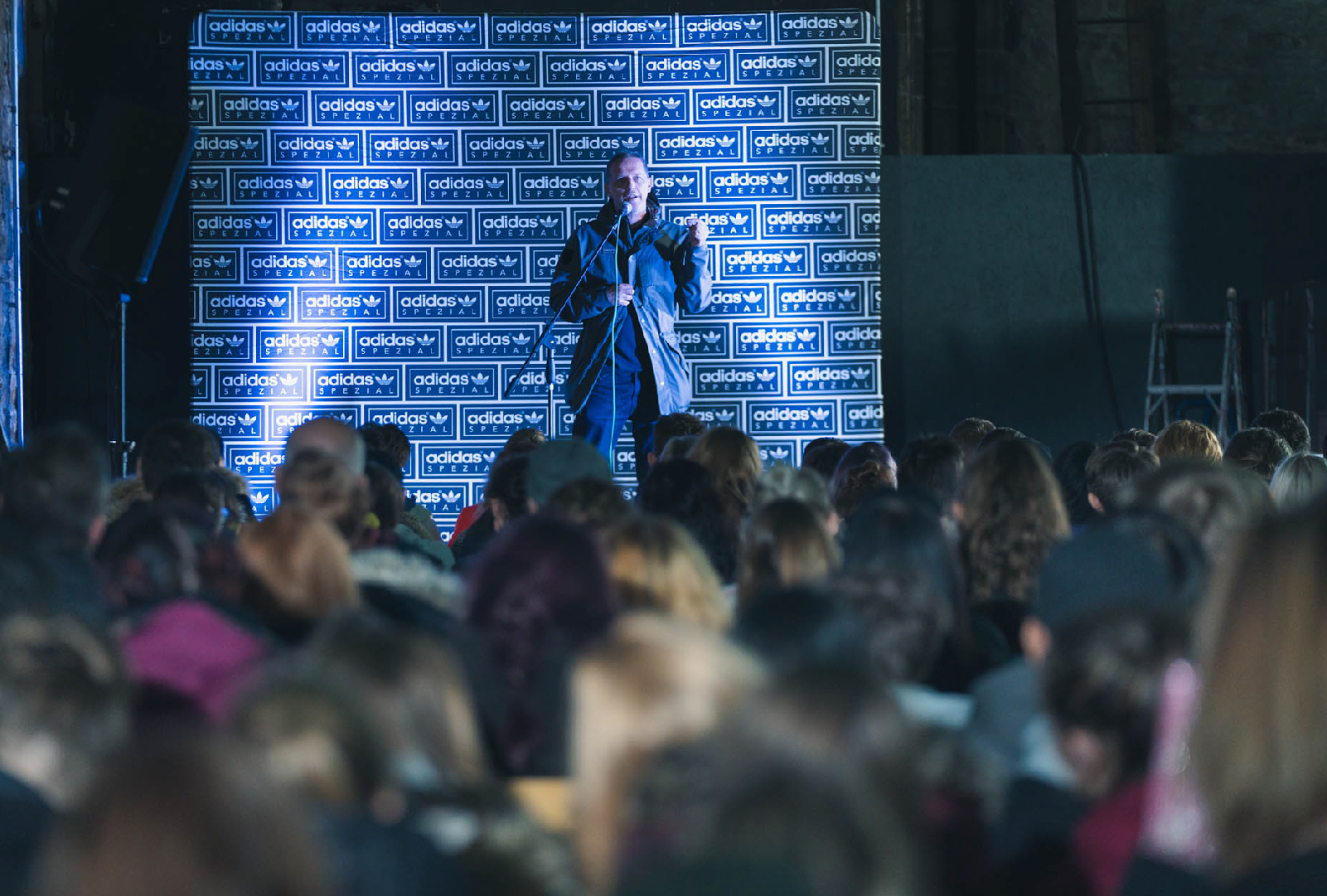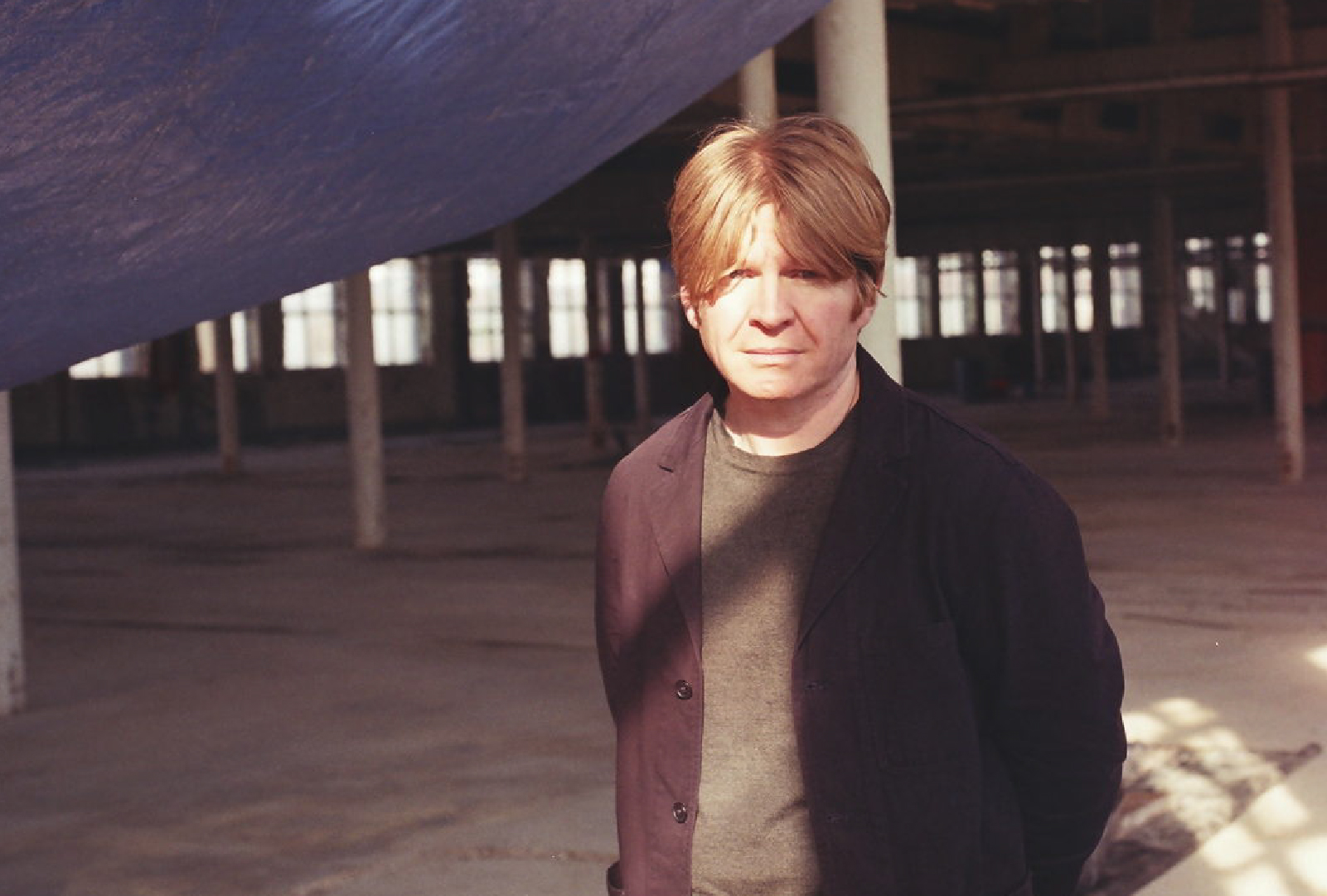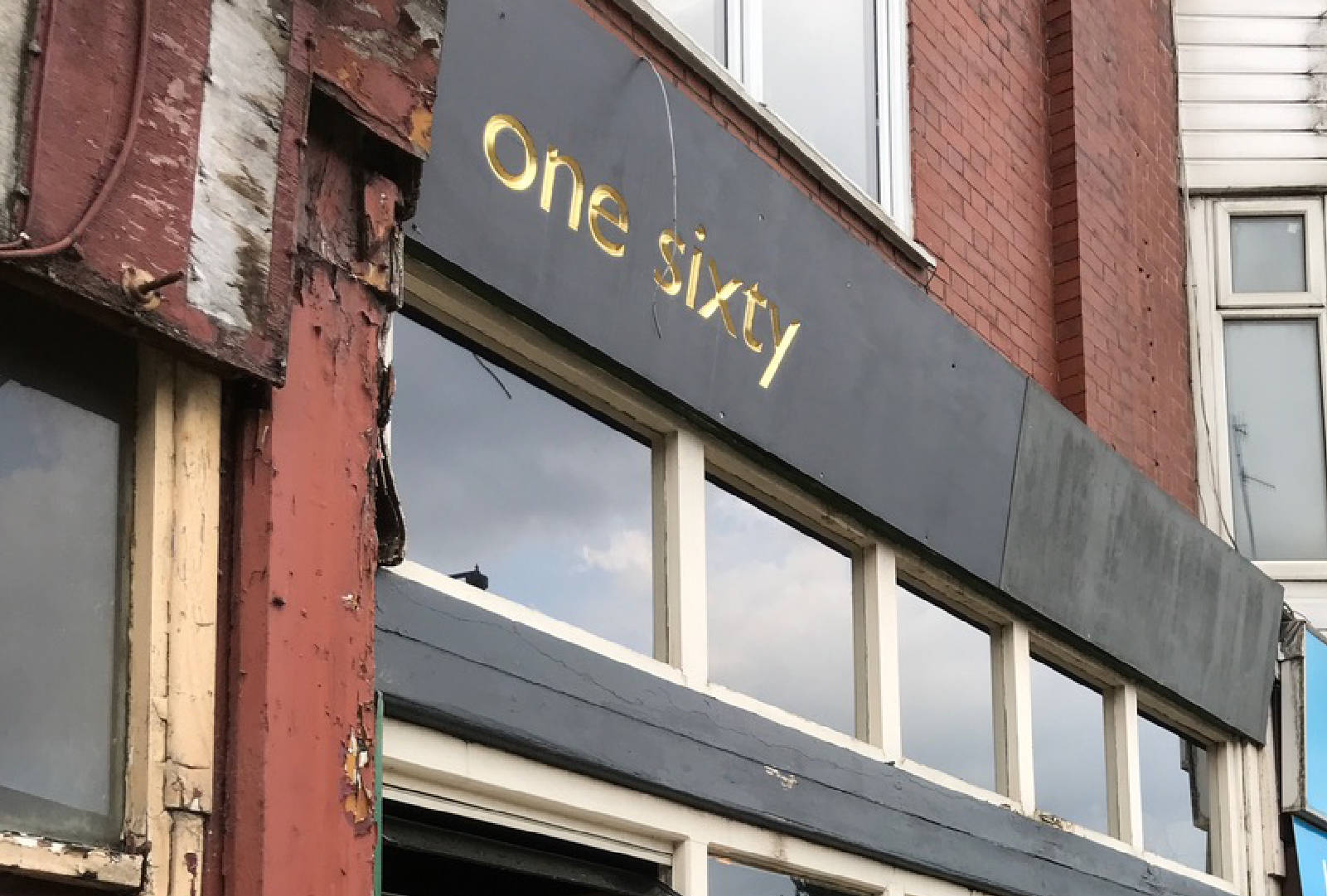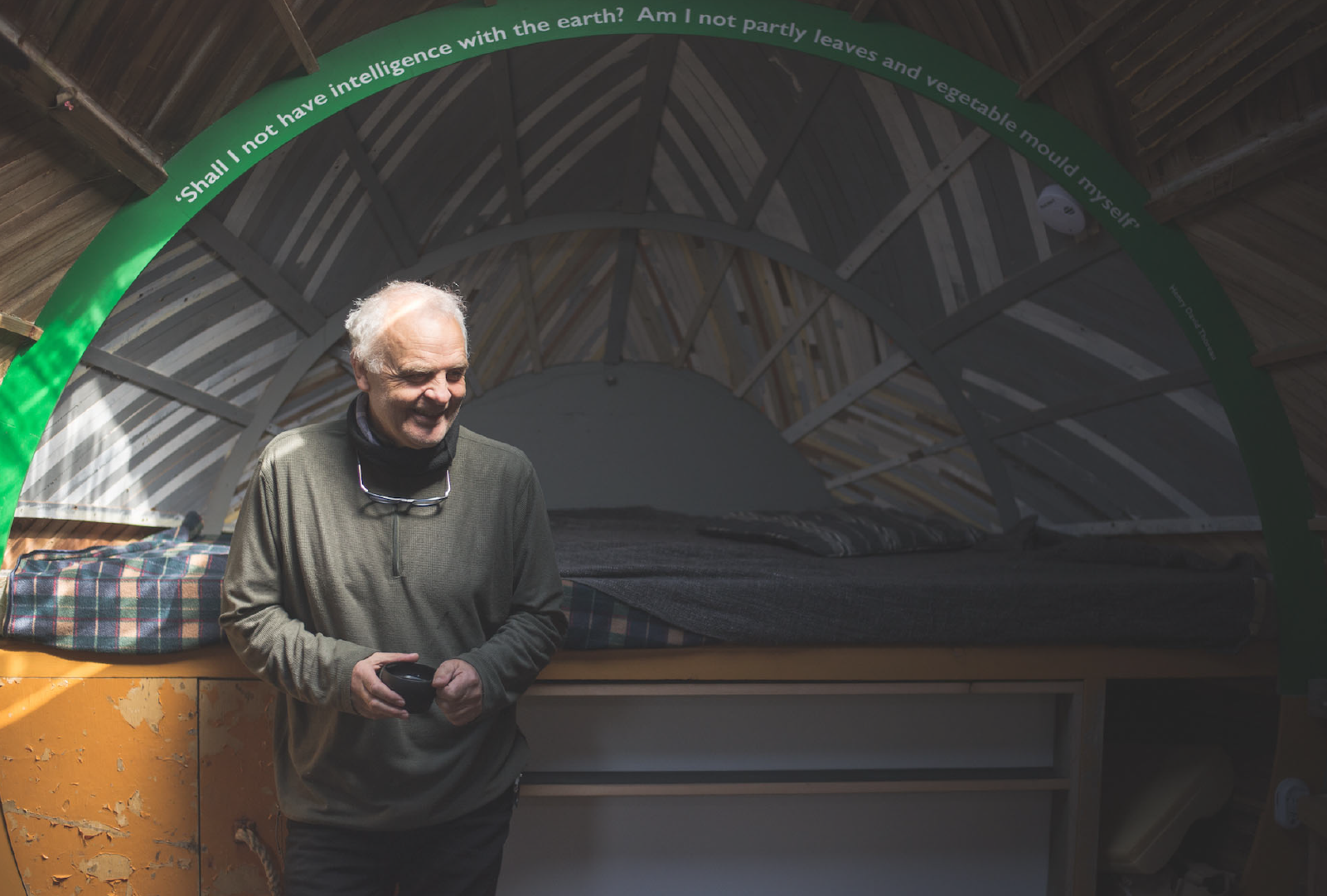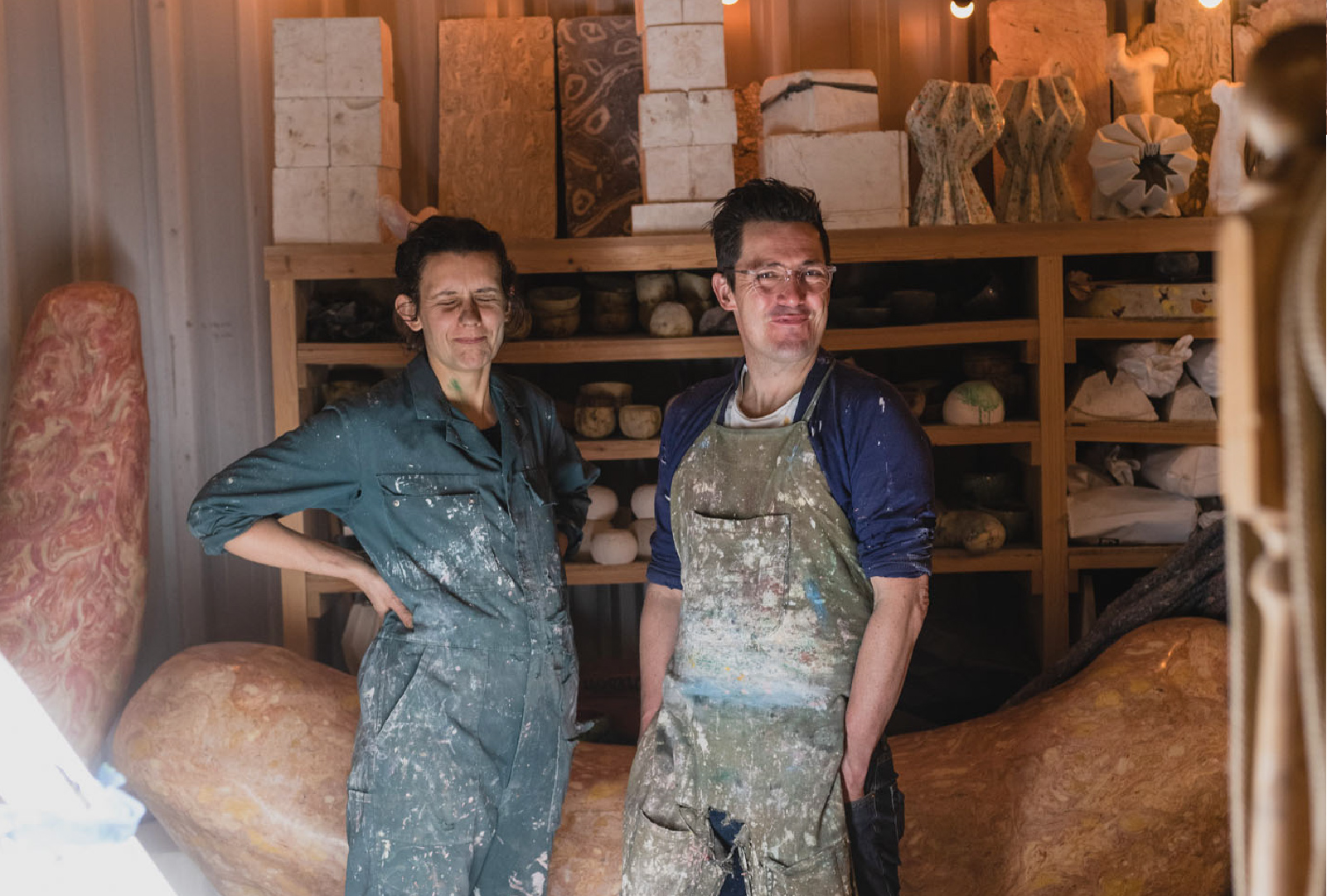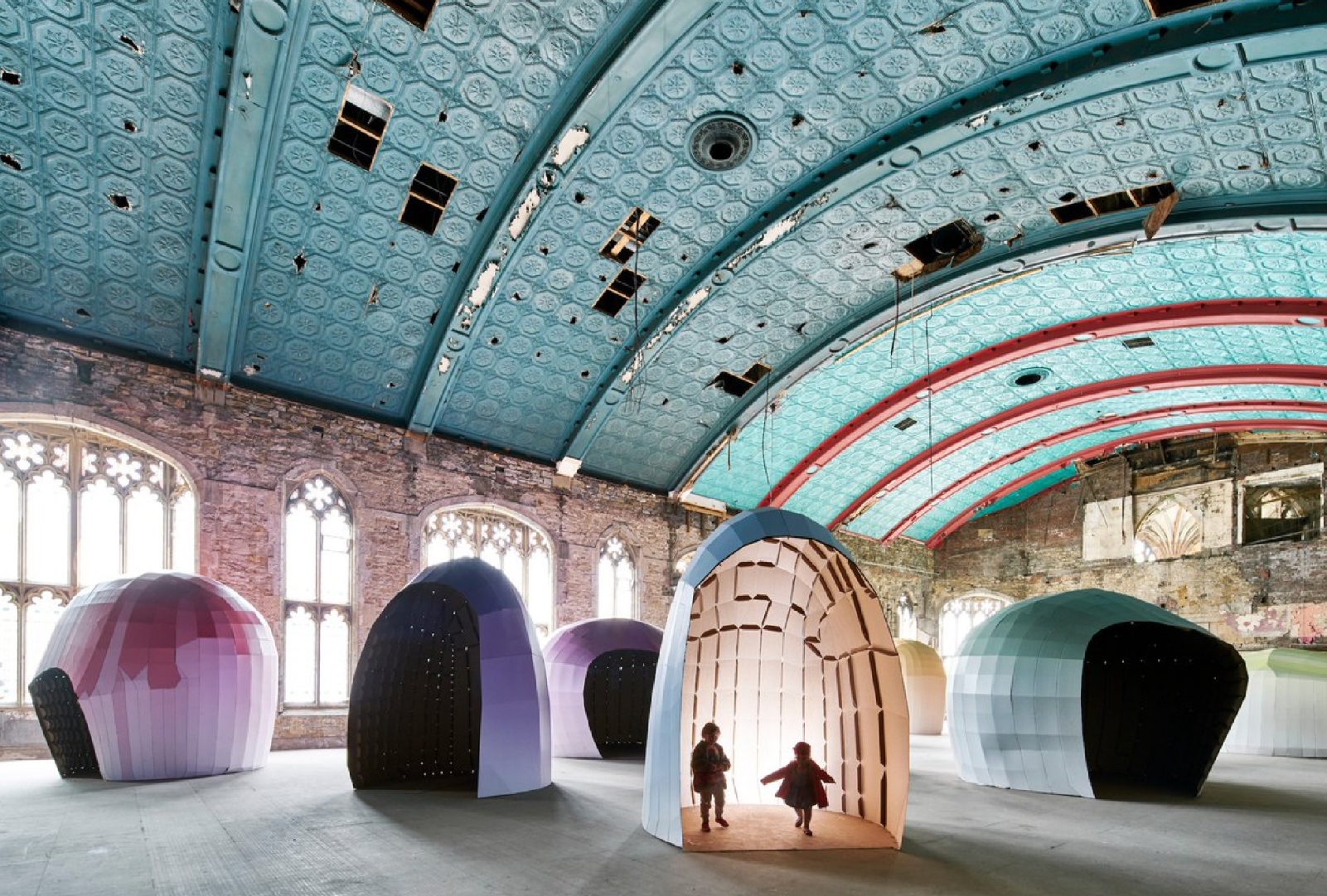Paul Hartley
And Rauf Bashir
In CONVERSATION
From March 2015, artist Suzanne Lacy worked with In-Situ, Building Bridges Pendle and Super Slow Way on a project that became known as Shapes of Water, Sounds of Hope. Over the next three years they worked closely with Pendle residents exploring the history and questioning the future of the area, focusing on the former Smith & Nephew Mill in Brierfield. Suzanne brought people from all walks of life together to share food, culture, hopes and fears; culminating in a mass community celebration and performance, including Shape Note singing and Sufi chanting, which was filmed.
The resulting film installation, The Circle &The Square was premiered in the mill in September 2017 and went on to be shown at Sydney Biennale in 2018 and San Francisco Museum of Modern Art in 2019.
Two years on all three organisations continue to work together and with Suzanne, and here, Paul Hartley, Director of In-Situ and Rauf Bashir, Project Manager of Building Bridges Pendle discuss the origins and legacy of the project for the area with Laurie Peake, Director of Super Slow Way.
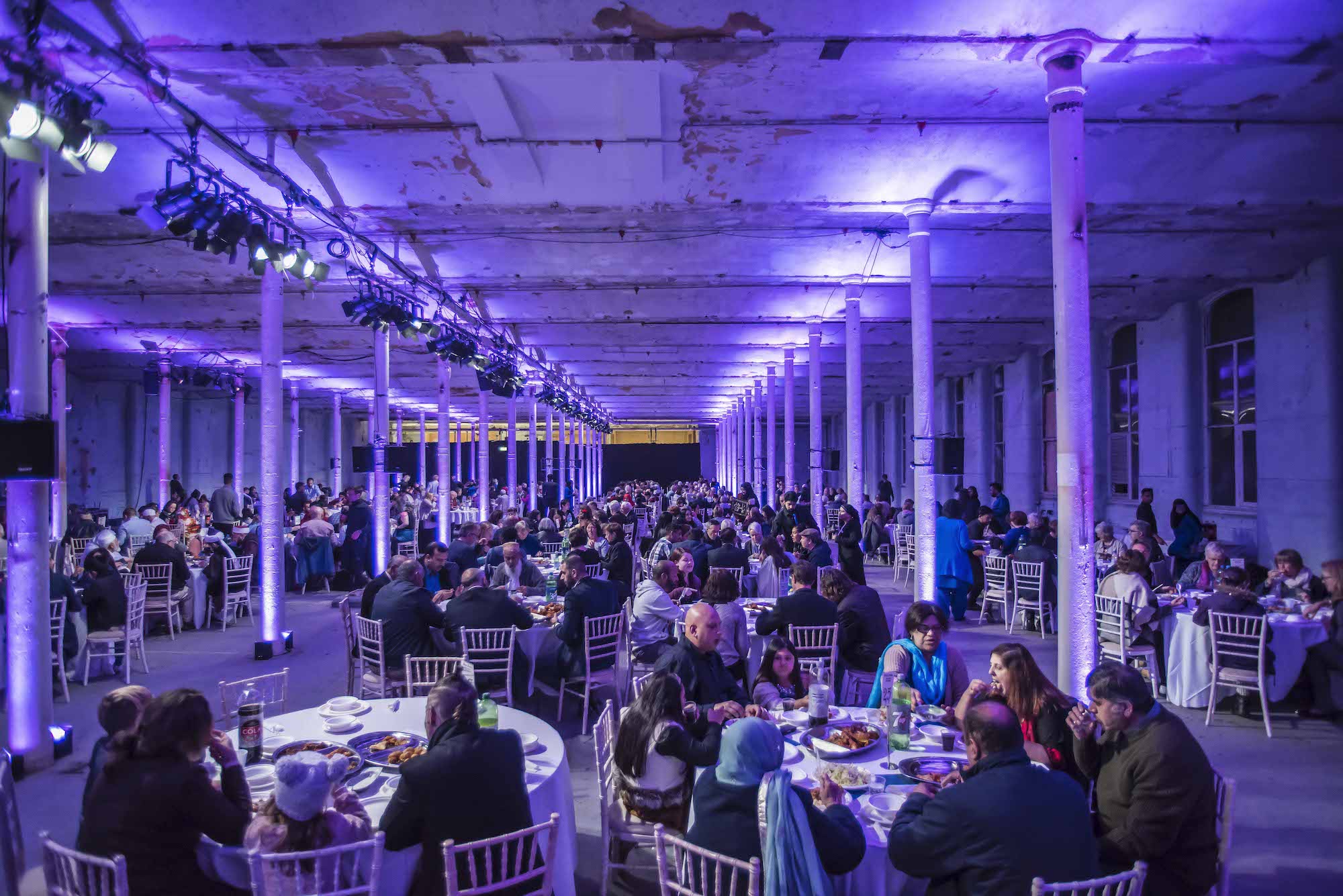
SHAPES OF WATER, SOUNDS OF HOPE 2015 –2017, PENDLE. WITH ARTIST SUZANNE LACY AND PARTNERS IN-SITU AND BUILDING BRIDGES PENDLE.
PHOTOGRAPHER CHRIS PAYNE
LP
The two of you are achieving great things together in Pendle, particularly in terms of cultural exchange between communities. How did you first meet?
PH
We'd both been working in the area for quite a while and one of the tools that In-Situ use to work with and talk with people is Talkaoke, which is a pop-up talk show created by the organisation The People Speak; it’s a mobile, circular table which has battery-powered speakers and a microphone to amplify the conversation with the general public in public spaces with a host sitting in the middle. There’s no agenda and I host it to help keep the conversation flowing and people come and go and join in.
We've held it in various places in and around Pendle and we were doing a session in front of the ACE Centre in Nelson a couple of days after the soldier, Lee Rigby, was murdered by what was described as a terrorist. When there's a major incident like that it inevitably comes up in the conversation around the table and we ended up in quite a challenging conversation with some local people, predominantly white. Once you get one point of view around the table, it's hard to explore other avenues around the issue but the beauty of Talkaoke is you get people walking past and, lo and behold, a family came past and we encouraged them to sit down. The family were of South Asian origin and, amazingly, this guy was happy to sit down and join in the conversation and brought a very balanced viewpoint to the perception of Islam and his belief and his faith and it just completely changed the dynamic of the conversation. That was the first time that I met Rauf.
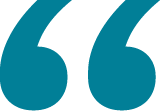
The project (Shapes of Water, Sounds of Hope) offered a new kind of platform for those who were like minded and where collaboration could be more meaningful, it was about ideas and became a tangible activity centred around Suzanne Lacy and her explorations.
RB
Yes, my family and I just walked past at the right time and everyone just kind of stopped and looked at us and we just kind of stopped and looked at them and Paul invited us to sit down and join the conversation. So we sat down, myself and my wife, Shabana, and a question came up about Muslim women and she just kind of dispelled the stereotype, simple as, and then we moved on and went on with our day.
It was probably just prior to that time that Building Bridges had started to get involved in some local networks where In-Situ and Talkaoke had been mentioned and I had thought that sounds interesting but we had never managed to meet. And it was really when the whole Suzanne Lacy project came to the area that we could see the potential of this new initiative taking place and that gave us a reason to connect on a common goal.
From the Building Bridges perspective, we're always happy to try to think of different ways of engaging with the community, so connecting with In-Situ was welcome from the point of view of broadening our horizons and opportunities.
The project (Shapes of Water, Sounds of Hope) offered a new kind of platform for those who were like minded and where collaboration could be more meaningful, it was about ideas and became a tangible activity centred around Suzanne Lacy and her explorations.
There was the organisational link between In-Situ and Building Bridges Pendle and at the same time, personal links with me being a member of the Free Spiritual Centre (FSC). I remember you, Laurie, coming along to our Sufi chant events on Sundays, so the connection came for me personally from two points, one was with In-Situ and Paul and one was with you at the chanting group. So I was coming to it from two different angles, one being community engagement and cohesion dynamics and the other one very much about this specific Sufi group linked to Sufi heritage in the area and the role it could have. Some may say it’s coincidence but I believe it's more than that.
The Free Spiritual Centre started off with a group of Muslim men and women, some first generation born British and some second generation born British. We wanted to create a platform for both the Muslim and non-Muslim community that presented an opportunity of seeing the world and society with an added dimension of spirituality that leads to all sorts of expression in how you see things in a different way, of how you live your life and how you are with people, family and society. If you are free in your mind, you are as free as you want to be, so the membership reflects that, as in people who are of Christian faith, Islamic faith or have no faith and it actually doesn't matter; and people have connected to it because it's not about organised religion but it really helps people to push their mental boundaries as to how they see others and to break down barriers to connection.
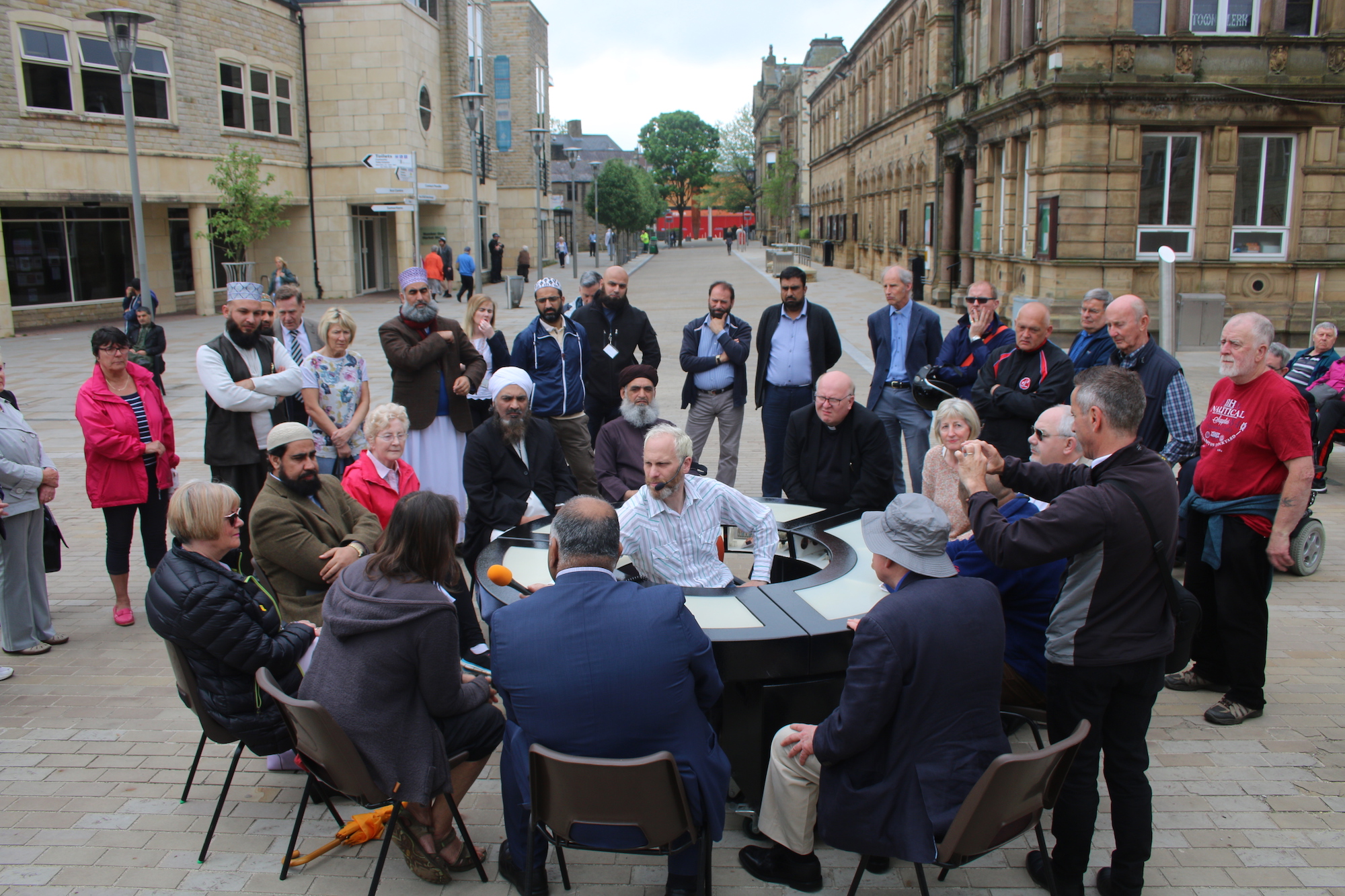
TALKAOKE, PENDLE. NELSON TOWN CENTRE
COURTESY IN-SITU AND BUILDING BRIDGES

The way you've just described your activity, can often apply to art; making a space for possibilities and creative collaboration without boundaries and actually finding spiritual connections and seeing things differently - the best art allows that too.
LP
It's an amazingly unique form and forum for cultural expression. The way you've just described your activity, can often apply to art; making a space for possibilities and creative collaboration without boundaries and actually finding spiritual connections and seeing things differently - the best art allows that too. When Suzanne came here she was looking for the different modes of cultural expression in this area.
PH
I remember my first experience of a Free Spiritual Centre session. It was the first time I felt I had an opportunity to really feel another culture’s spirituality and their expression of that and how it could make you feel and you could see how that could be appealing to a lot of different people. It was just a very friendly, open, welcoming space. It was very simple, just having some food together after the session and the group just serving people – it was fascinating because sometimes these things can get too complicated but this was a very, very simple experience.
LP
I think what you feel there is that very palpable sense of being in a collective and the strength of collective expression. It’s not an individualistic enterprise; I was really struck by just how powerful it is to do something together. It's also a very simple manifestation of what's termed cohesion; it's just as simple as doing things together, talking together and eating together.
I suppose this leads us on to thinking about art and about one's relationship to art and how working together or learning from each other has shifted that for both of you or either of you. I remember the first conversation Paul and I had with you, Rauf, about being involved in the project or at least going on the journey with Suzanne to see where it would take us.
PH
Well, that's the thing, the way Suzanne works is not easy to describe and it takes a willingness on the part of somebody to come on a journey which is what has been the strength of the relationship. Suzanne had what she referred to as the nub of an idea in Shape Note singing, as one form of expression which she used as a starting point. It is this kind of working class musical, spiritual expression called Solvege singing she'd experienced in America, particularly the coal mining area of Appalachia. It also had some links and roots here in Lancashire, where it was active around 400 years ago. We thought OK, well, it's got some kind of history here but what does it look like today and how do you then convince someone to join you in that exploration?

The collaboration helped people navigate out of the norm, according to their understanding and position, on a personal and professional level.
RB
I think that was reflected in the collaboration; you need a mind-set that likes a bit of a challenge and to think outside of the box, or be encouraged to think outside the box and some people did. The collaboration helped people navigate out of the norm, according to their understanding and position, on a personal and professional level. Community engagement projects can challenge individuals who may bring a certain prejudice that they didn't realise they had. If you can deal with that you'll move forward and if you can't deal with it, you have to stay where you are or you can potentially move backwards because you become more fearful of coming forward because you'll be challenged.
PH
I definitely experienced quite a bit of that! Suzanne’s way of working often creates that challenge as well, because whatever comes out of her process tends to have an element of scale to it and so she started with the challenge of, can we get 1000 people in Pendle to be involved? As much as I think we were working ambitiously, it was in a particular way; smaller, quieter, slower; it would build up, but always started on an intimate level which is absolutely paramount to how we want to work at In-Situ. But when someone does drop the gauntlet, as it were, you do think, okay, well, what does that look like? How can we get that many people involved in something? And Rauf and the Free Spiritual Centre amazingly came on board but I had numerous conversations with different groups and often there was a very negative response, saying, you'll never get that many people together in Pendle. Suzanne really sets the bar high and pushes you and I think that project pushed us farther than we’d ever been.

SHAPES OF WATER, SOUNDS OF HOPE 2015 –2017, PENDLE. WITH ARTIST SUZANNE LACY AND PARTNERS IN-SITU AND BUILDING BRIDGES PENDLE.
PHOTOGRAPHER GRAHAM KAY
RB
I think the intensity grew as the scale grew and meant that people had to liaise with each other in a way that they don’t normally do in order to achieve things. It became more about goodwill and individual values than organisational interests and I think that made the difference, that those who got really involved brought a certain kind of personal attitude. We just took on the challenges and just kept on taking them on and on and on.
We all felt the same way but we actually enjoyed it. There were many times in the office when I felt, gosh it’s draining, but when I reflect back now I really enjoyed those moments. It was intense, but in the absence of that I don't think I'd have grown in the way that I did at that period. From an organisational point of view, we weren’t in a good place because that was when I was working just two days a week and applying for funding, so it was very timely in terms of personal and organisational development and capacity because we were sharing the responsibility of the project with others.
PH
And for me having to have the kind of conversations we were having, allowed me to try to understand the complexities of a different faith and a different culture and the different versions within it and how people responded to that. I remember there was a lady in the audience at around the third community dinner where you did a Dhikr (a Sufi chant) who asked very publicly, ‘what are these words, what do they mean?’ And Nasser, who led the chant, gave just a really solid, open answer back to it.
LP
I remember the woman asked, ‘Are you chanting about Allah? Everyone in the room took a breath and thought 'this could be awkward' but Nasser explained, really brilliantly and simply, what the chant was about and what it’s purpose was. He just absolutely deflated that awkwardness because it's not an awkward question, it's an absolute legitimate question. It's a question that needs to be asked for one faith group or a non-faith group to understand another, to understand yourself, to understand what spirituality is, particularly at that moment in time and now, because, sadly it's still going on, that fear of Islam.
And then, after the chanting and singing, we sat round in tables of six to eight people and I was on a table with that same woman and a few other people, Asian women and a police woman. We had an amazing and frank conversation and, by the end, the white woman who had asked the question, who comes from a wholly white, more rural neighbourhood a mile up the road, had arranged to meet one of the Asian women to go a walk in the countryside. That would not have happened without this project and it's one of those small acts that can have a ripple effect right across the community.
RB
Absolutely. At that time some of the people involved with the FSC were younger lads who were just out of school, or midway through college and are now in university or have just come out of university and another one’s a policeman and one’s in his final year as a pharmacist, and even now when we discuss that whole period, they're still appreciating the experience and so it is still shaping them in a way. Essentially understanding and being involved with society outside of your own cultural or faith tradition is important and is enriching.

SHAPES OF WATER, SOUNDS OF HOPE 2015 –2017, PENDLE. WITH ARTIST SUZANNE LACY AND PARTNERS IN-SITU AND BUILDING BRIDGES PENDLE.
PHOTOGRAPHER MATTHEW SAVAGE
PH
For me, it was one of those projects that ended up being a very personal experience as well. It was an extension of the reason we created In-Situ, which was to commit to where we are and where we live. And suddenly, those boundaries between life and work were no longer there and this project, through the Shape Note singing sessions, which I took part in as a participant as well as someone running the project, brought me back to talking and meeting with people that I grew up with, to a church background, and some family members as well.
We had a smaller group of 10 or 15 people of mixed faith and backgrounds that really embraced having a go at that and even taking part in some of the chanting which for them was a bit of a step, particularly knowing some of them as family members and their experience of that kind of a culture. But that was the starting point, really, it was a big part of the performative bit at the end, but it also opened up conversations around economics, employment, the mill, the reason why we were doing the project here; that was yet another way that other people could then embrace the project and get into it, whether it was a connection to the mill or telling their story. The layers of the project were fascinating.

I know from the people that I know, it's been one of those experiences that makes you assess yourself in terms of how you view other people, how you're willing to challenge a prejudice that you may have had due to you not having the first-hand knowledge, and there's so many great examples of that.
RB
Yes, there were so many layers of how it impacted upon people, from the conversations and especially from the difficult conversations. I remember one of the councillors from Brierfield, a lady who came to the final performance in the mill with her grandson. ‘He’s never seen anything like this,’ she was saying and, at the end of the banquet, he tried on a turban of one of the lads from the FSC. What she took from it in terms of seeing her grandson engage in such a way and what he took from it as a young child, is invaluable experience, and there are so many stories like that. I know from the people that I know, it's been one of those experiences that makes you assess yourself in terms of how you view other people, how you're willing to challenge a prejudice that you may have had due to you not having the first-hand knowledge, and there's so many great examples of that.
LP
It was a multi layered project, and, in parallel with the community conversations and the performances, there were interviews being carried out. Suzanne wanted as many interviews with residents who live here and particularly people who used to work in the mill. They were going on the whole time as well, so that there was this constant layering of depth in the project that was involving so many residents in actually thinking about what the mill meant, how the mill brought people together, how the two communities that are now so often seen separately, the Asian community and the white community, were one; they worked together in one enterprise. To hold most of the activity in the mill was so important because it allowed people to look through that lens and examine what had gone on in their community and the part that they played in it and how that's bound into our cultural makeup whether that's faith based or class based. Part of the project’s power was its impact on this latest generation who really had no idea of what had gone before and the part that the mill played in it and the relationships between communities then.
RB
And there’s still power in the sense that those interviews, the photographs, the stories are out there as a resource to share that local history, so, for instance, my children are now aware. I mean, the first time I walked into the mill, looking at that massive floor took me back to the mid 1980s when I used to take my dad his dinner. I used to go to that door and it would open up and you’d see the full line of the machines weaving away and the deafening sound. It took me literally back to that time when I was about 14.
PH
There are quite a few of those memories of people taking dinners to people!
LP
I did that with my dad as well, if he’d forgotten his sandwiches.
RB
And I can remember the sound even now, I can just hear it, chugging away, the full floor of looms. It was deafening. So it’s just amazing how all various connections started to happen through the project. All those involved have their own personal connections that came out in some way as well.
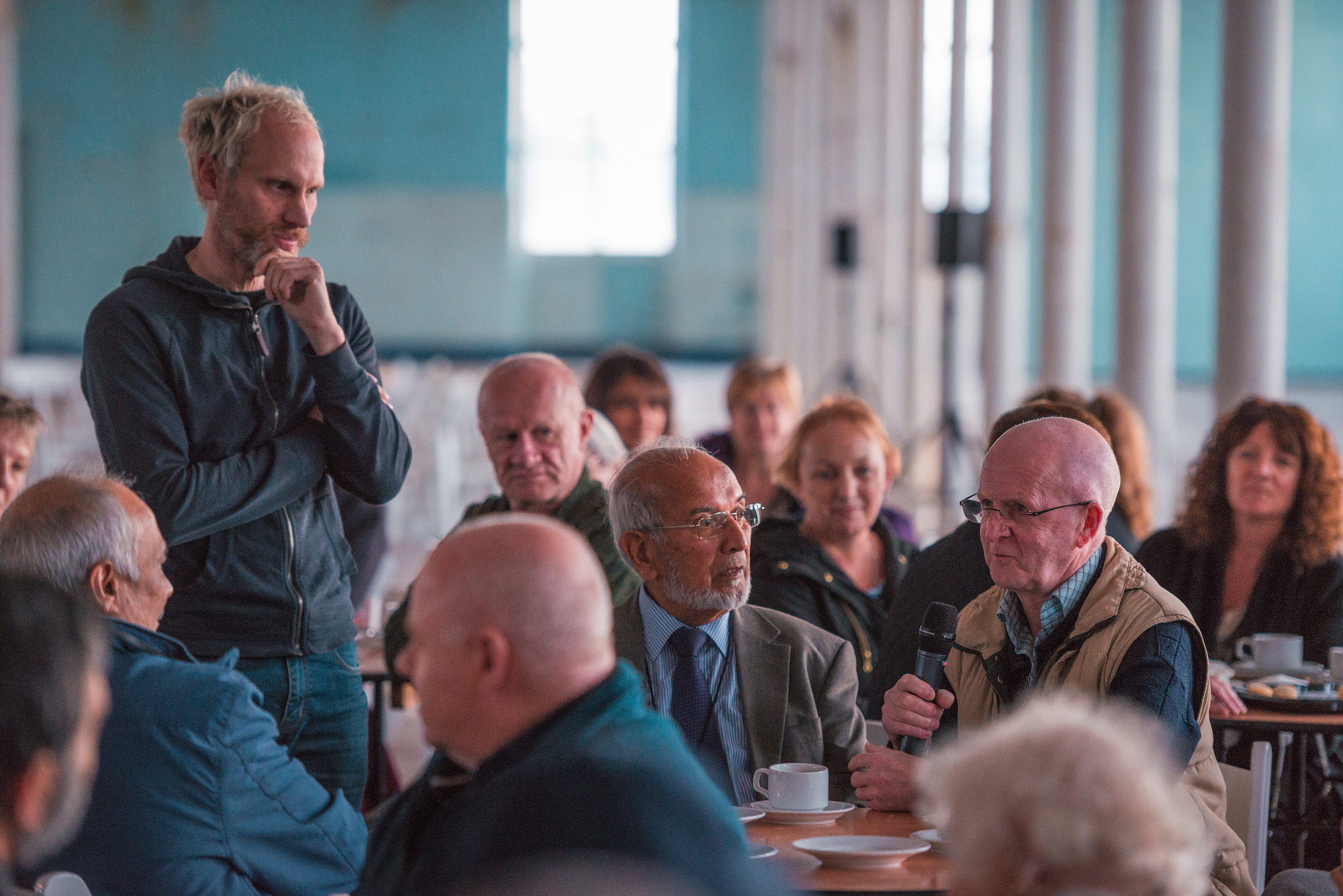
THE CIRCLE AND THE SQUARE 2017 PENDLE. WITH ARTIST SUZANNE LACY AND PARTNERS IN-SITU AND BUILDING BRIDGES PENDLE.
PHOTOGRAPHER MATTHEW SAVAGE
LP
Since Shapes of Water, Sounds of Hope finished as a project in 2017 your two organisations have carried on working together on a on a regular basis and I think you've already suggested that that's a real legacy of the project; that it threw you into an incredibly intense way of working, through personal commitment as much as a professional commitment, wasn't it? I would have thought it's not something you can just walk away from.
RB
I think there's an automatic openness now between us now. Rather than asking can I take this on board, it’s just, right, how can we make this happen? There are major things that we’ve now committed to such as the Pendle Festival of Culture and ongoing events such as Talkaoke that we now must hold at least 20 of a year, across the area from Brierfield to Barnoldswick.
PH
I think, for In-Situ, the experience of working on something at that level gives a confidence and a will to think, well, actually, we can do this! With Talkaoke as Rauf says we're doing it regularly enough now so that actually when there is a key moment, something happening nationally, it provides a safe space for discussion. For example, two days after the Manchester bombing we already had an outdoor town centre Talkaoke planned with faith leaders; it wasn't a knee jerk reaction to that event, we were already creating a safe space for people to come together and people were getting used to that because of all these things we've been doing, including the peak of the project with Suzanne. But the council was nervous, saying, this may not be the right time to do it. But we said this is the most important time to do it.
RB
We said we've advertised it and if we don’t do it, it sends out a negative message, but we feel confident that this is a subject that can be spoken about. The experience itself was amazing. Paul is the maestro of Talkaoke and it ended up becoming this kind of grieving session. Everyone came along to it because they felt Manchester is just so close to us. It was a really positive experience with people coming in contributing, listening and leaving feeling lighter; you could see it in their faces and they stayed on, normally you get people coming in and moving off, but I didn't see anyone who came and then walked away, they stayed right to the end.
PH
I often think that most of the things that we're doing are just about creating different social spaces and creative spaces for this kind of thing to happen because nobody can really hide behind their role or their position or whatever. Everybody is in a position where you share your own thoughts, in the same way as the dinners with Suzanne did and that’s where you do get a richer response, a more challenging, more authentic response. It pushes you, you have to think more about how people will interact around that, that feels like you're just getting beyond the idea of surface cohesion or just whatever.

I often think that most of the things that we're doing are just about creating different social spaces and creative spaces for this kind of thing to happen
RB
At the recent hustings events before the 2019 election, we had a Talkaoke and the public are becoming accustomed to that way of conversation, it was appreciated. It wasn't a panel facing an audience, it was more of a collective conversation.
PH
Which just echoes all those things that we try to do with it. It challenges the hierarchy and the power, doesn't it? To ask who is leading the conversation? That's really important and that's what these processes can do.
LP
So powerful, I think it is the power of the circle and the square and I suppose that's the artistry of Suzanne, going through an experience together, not knowing where you will end up but actually what you end up with is a very distilled metaphor of what you’ve discovered. And what we've found out is that power of the collective that is non-hierarchical, because the dhikr, the Sufi chanting, takes place in a circle, Talkaoke takes place in a circle, Shape Note singing takes place in a square, and you're all singing or talking together with each other and not to a higher power. It's not a congregation or a choir facing an altar or a choir master, it's not a teacher facing a classroom. And the power and the energy that you feel in that togetherness in the middle of those spaces is the vital element.
RB
I think there was a kind of a mutual connection with Suzanne as well, coming from a different culture, with a different work ethic and routines but she fitted in well and people didn't see it as an intrusion. I would define that as a spiritual connection. Over time, you can see a core sense of cooperation between individuals, which then starts to lead everything and you realise that one person can't do it on their own, there has to be a sense that you're not on your own and you can see the bigger picture.

And what we've found out is that power of the collective that is non-hierarchical, because the dhikr, the Sufi chanting, takes place in a circle,Talkaoke takes place in a circle, Shape Note singing takes place in a square, and you're all singing or talking together with each other and not to a higher power. It's not a congregation or a choir facing an altar or a choir master, it's not a teacher facing a classroom. And the power and the energy that you feel in that togetherness in the middle of those spaces is the vital element.
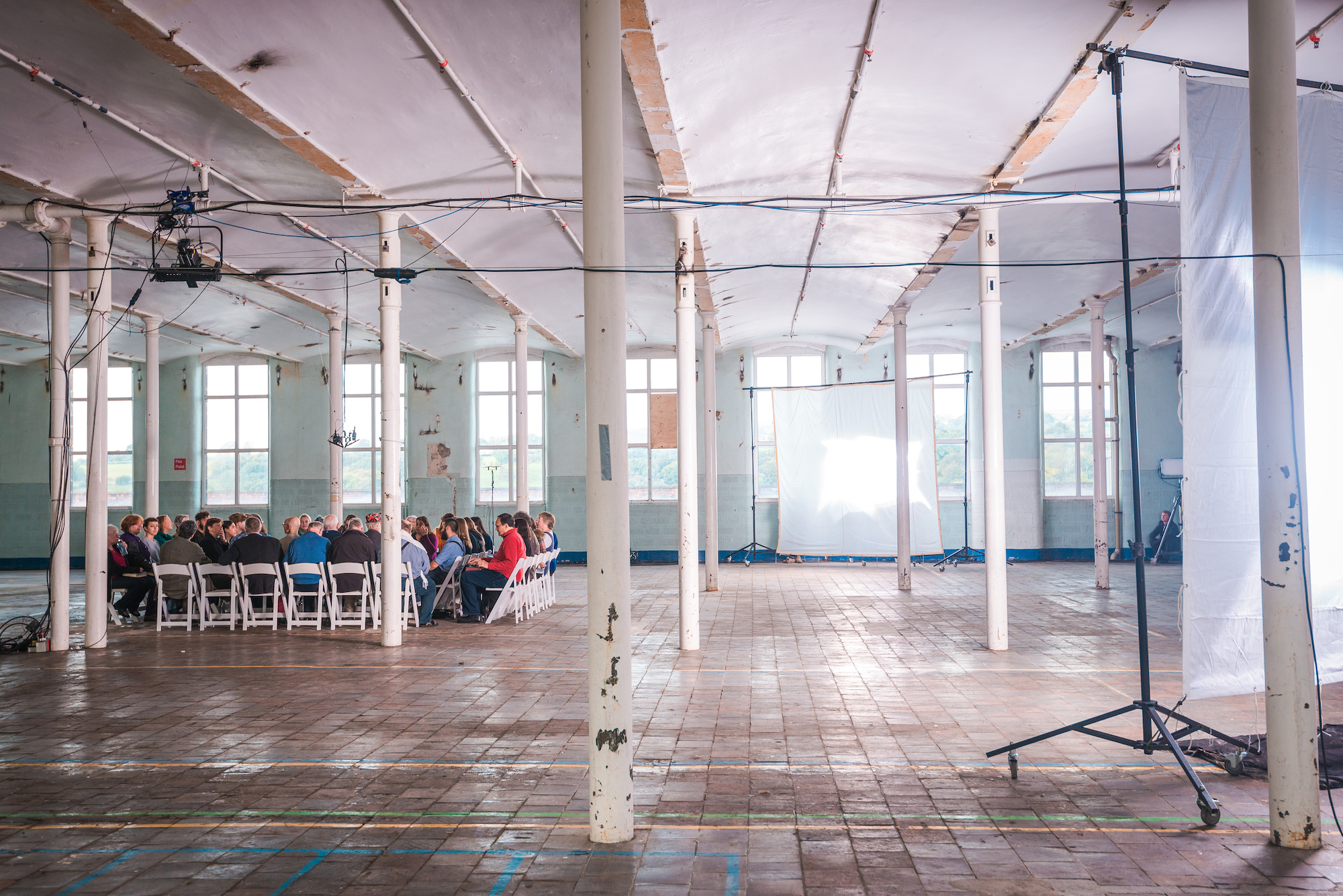
THE CIRCLE AND THE SQUARE 2017 PENDLE. WITH ARTIST SUZANNE LACY AND PARTNERS IN-SITU AND BUILDING BRIDGES PENDLE.
PHOTOGRAPHER RICHARD TYMON
Paul Hartley has worked as a project manager and youth and community facilitator and been instrumental in creative community engagement in Pennine Lancashire for over 20 years. Paul is a founder director of In-Situ established in 2012 and based in Pendle In-Situ is an embedded not-for-profit arts organisation with a vision for art to be part of everyday life.
Currently the Project Manager at Building Bridges Pendle, Rauf Bashir has been a community worker for over ten years. Together with their multi-faith team, Rauf has been involved in setting up many of the working practices of Building Bridges Pendle which aims to promote mutual understanding and cohesion in Pendle’s diverse community.
Articles

